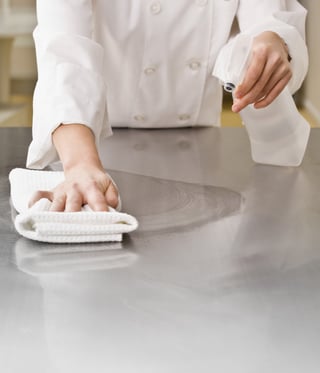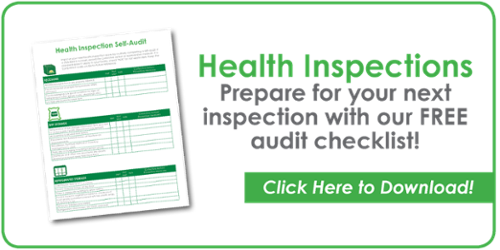With so many people relying on your facility for their daily nutrient needs, any evidence of pests can be devastating. Implementing sanitation procedures and creating an unfriendly environment for pests such as roaches, can help you keep things running smoothly and your clients fed.
Create a Hostile Environment for Pests through SanitationPests are attracted to kitchen environments for many of the same reasons as humans. They are warm, they have wonderful smells coming from them and there is a supply of food. While common sense dictates carefully cleaning your kitchen to keep pests away, it goes beyond a general cleaning to create a hostile environment for pests. In food service, sanitation is key to creating a hostile environment for pests, and there are several steps involved in the process.
1. Seal all possible points of entry into your building
While it may not curb all roaches or some other types of pests from coming into your kitchen since they often find entry through shipments being received, you can significantly reduce the chance of pest infestation by sealing up any outside points. Look for even the smallest of openings around pipes, gas lines or vent ducts since pests and rodents can fit into very small spaces. A fully-grown rat can squeeze itself through a 1-inch opening, so if the opening is too large to seal with caulking, cover it with a screen.
Despite the heat that may collect in a dining facility, it is necessary to keep exterior doors closed to prevent entry. While receiving shipments and outgoing items may require frequent opening of doors, be sure your doors are closed immediately and are not blocked open for any length of time.
2. Outdoor cleanliness matters
Always keep the area outside of your facility free of trash and make sure any garbage containers are emptied regularly. Pests are attracted by organic matter breaking down, so the cleaner you can keep your disposal area, the better.
3. Practice good housekeeping
Encourage your staff and volunteers to clean up spills immediately and to always thoroughly sanitize equipment after each use. When you consider the size of most pests, it does not take much for them to find a reliable source of food in your kitchen. Pay special attention to areas such as the space around mixers (where flour dust may go unnoticed) and meat grinders (make sure small particles of meat do not remain around the unit). Other areas of particular concern include drains, where organic matter can collect, and trash containers that need frequent emptying and cleaning.
4. Food must be adequately stored
The easier it is for pests and rodents to access food, the more likely you will be to face a problem with them. Whenever possible, use airtight containers to store dry goods and never leave bags of flour, oats or other grains open. Teach employees to put away items quickly when they are finished with them so the possibility of infestation is greatly reduced. Working clean helps make general housekeeping and sanitation efforts less taxing.
5. Limit the areas of food consumption and storage
If you have locker space for employees, they should be cleaned regularly, and food storage, other than the day's lunch or dinner, should not be allowed. Define an area for employees to eat, be it a break room or one area of your facility, and encourage them to keep it clean. These areas should be regularly given a thorough cleaning and included in your sanitation program so pests are deterred from finding a food source this way.
6. Select your pest control company carefully
Eradicating pests through pesticide use should be your last defense since it often results in product loss and downtime for your facility. Many pest management companies offer preventative services designed to be effective within food handling guidelines and can reinforce your sanitation efforts. Pest control should be considered a complement to your sanitation program rather than your sole protection.
Creating a hostile environment for pests and rodents is critical to your dining facility's success. With you and your employees working together to eliminate a food supply or comfortable habitation, you can prevent roaches, pests and rodents from putting your clients and your facility at risk.
GA Foods' goal is to become the industry gold standard in food safety and facility sanitation. We also want to help other dining sites and facilities excel in food safety practices. We have created a FREE self-audit checklist to help prepare your site for health inspections and ensure your team is following HACCP standards.










